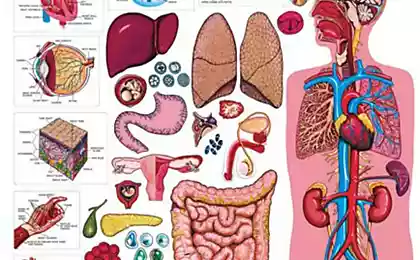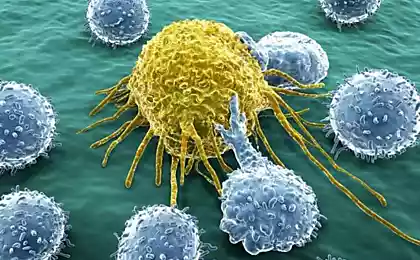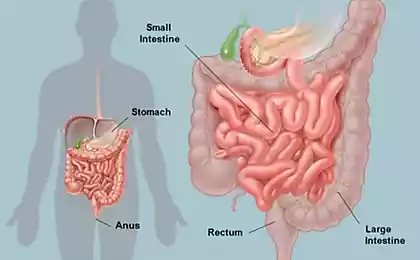549
H. H. Reckeweg: 6 PHASES of emergence of any disease
“I'm writing something very special for medicine. It will be a long time before it will be recognized by all...” H.-H. Reckeweg
According to Reckeweg, a living organism is considered as a dynamic system that exchanges necessary for the life with the environment.
The concept of made view A. Piringer, the father of modern histochemistry — the decisive role of the matrix in the body that abnormalities in connective tissue are the basis of all diseases.
Any harmful effects that violate the subtle dynamic processes occurring in the matrix of Reckeweg, are "toxin".
They introduced the concept of "homotoxins", meaning the toxin to humans regardless of its nature.

Homotoxins may arise endogenously (products of metabolism or unsplit/undeleted in sufficient quantity) , or be associated with the environment (harmful environmental factors, infectious agents, etc.)
When there is a "meeting" with the homotoxins, the body tries to eliminate or adapt to the harmful effects if elimination cannot be complete.
Homotoxicology proceeds from the fundamental position that all life processes depend on "interconversion identified chemical agents into useful energy."
In the case of illness chemicals become pathogenic toxins.
"These homotoxins are responsible for the processes that we call "disease", and many of the symptoms of the disease in fact should be seen as a manifestation of the body of imagetexture homotoxins".
Antihomotoxic therapy is based on the concept of normalization of the internal environment of the body.
The Reckeweg put forward a tentative idea of Neuro-Endocrine-Immune Matrix, which he called the "Great Protection".
This system includes:
Reckeweg considered each of these components as crucial for the maintenance of health or fading in the disease process in antihomotoxic direction.

Reckeweg the next step was to develop Tables of homotoxins — the original combination of what the author called the 6 phases of the disease and various blastodermal or embrionalnuju tissues that give rise to disease.
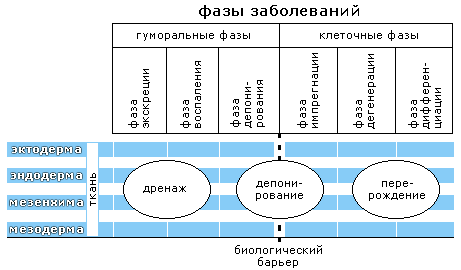
The abscissa shows the delayed phase of the disease, in the y — axis the types of tissues.
The first three phases, occupying the left side of the table, are collectively known as humoral.
According to Reckeweg, at these phases the body is already "coped" with the homotoxins or confident enough to resist them.
The first three phases of the disease opredeleny from following the three phases through so-called biological barrier. It goes between the third, the Deposit or accumulation fasoi and fourth, impregnation (saturation), and at the same time is a kind of "watershed" in therapeutic practice.
Phase of degeneration and differentiation (malignancy) is the so-called cellular phase.
Phase impregnation occurs in lesions of the homotoxins cell membranes, further detoxication occurs degenerative phase which is manifested in the destruction of intracellular structures, such as enzymes and genes.
At the end of the scale is the phase of tumors with the appearance of cancer in an individual or joint effects of carcinomatosis, anoxemia etc.
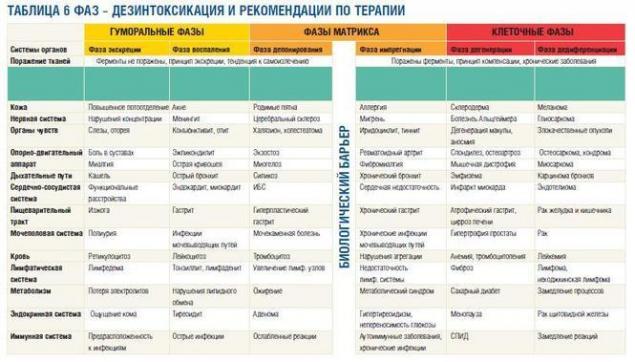
Vicariate as an expression of the dynamic regulation of the disease
If the result of the treatment there are "new" diseases or clinical manifestations, which are on the Table homotoxins directed up and to the left, it indicates "right direction" of treatment. This phenomenon was named by Reckeweg "regressive vicariale".
If as a result of the applied therapy, the clinical manifestations will be sent to the bottom of the table or to the right of it will be an indication of incorrect treatment (anthering). This phenomenon is called "progressive vicariation".
Reckeweg cited a number of examples, classically stating that tonsillar angina in the sense of progressive vicariation may, for example, go to agranulocytosis and subsequently even in leukemia as the result of chemotherapy of angina.
Treatment with corticosteroids eczema in a child can lead to the development of osmoticheskogo status, etc.
As an example of regressive vicariation (Hering's law) Reckeweg gives a description of "transition" ulcer 12 duodenal ulcer in the carbuncle, followed by recovery, or transition osmoticheskogo the state under the influence of antihomotoxic therapy to the same pattern of eczema.published
P. S. And remember, only by changing their consumption — together we change the world! ©
Source: //www.medicinform.net/zog/homeo/zog_homeo3.htm
According to Reckeweg, a living organism is considered as a dynamic system that exchanges necessary for the life with the environment.
The concept of made view A. Piringer, the father of modern histochemistry — the decisive role of the matrix in the body that abnormalities in connective tissue are the basis of all diseases.
Any harmful effects that violate the subtle dynamic processes occurring in the matrix of Reckeweg, are "toxin".
They introduced the concept of "homotoxins", meaning the toxin to humans regardless of its nature.

Homotoxins may arise endogenously (products of metabolism or unsplit/undeleted in sufficient quantity) , or be associated with the environment (harmful environmental factors, infectious agents, etc.)
When there is a "meeting" with the homotoxins, the body tries to eliminate or adapt to the harmful effects if elimination cannot be complete.
Homotoxicology proceeds from the fundamental position that all life processes depend on "interconversion identified chemical agents into useful energy."
In the case of illness chemicals become pathogenic toxins.
"These homotoxins are responsible for the processes that we call "disease", and many of the symptoms of the disease in fact should be seen as a manifestation of the body of imagetexture homotoxins".
Antihomotoxic therapy is based on the concept of normalization of the internal environment of the body.
The Reckeweg put forward a tentative idea of Neuro-Endocrine-Immune Matrix, which he called the "Great Protection".
This system includes:
- the reticulo-endothelial system,
- pituitary-adrenal axis,
- the connective tissue matrix or mesenchymal tissue,
- reflexes of the autonomic nervous system
- the liver.
Reckeweg considered each of these components as crucial for the maintenance of health or fading in the disease process in antihomotoxic direction.

Reckeweg the next step was to develop Tables of homotoxins — the original combination of what the author called the 6 phases of the disease and various blastodermal or embrionalnuju tissues that give rise to disease.

The abscissa shows the delayed phase of the disease, in the y — axis the types of tissues.
The first three phases, occupying the left side of the table, are collectively known as humoral.
According to Reckeweg, at these phases the body is already "coped" with the homotoxins or confident enough to resist them.
The first three phases of the disease opredeleny from following the three phases through so-called biological barrier. It goes between the third, the Deposit or accumulation fasoi and fourth, impregnation (saturation), and at the same time is a kind of "watershed" in therapeutic practice.
Phase of degeneration and differentiation (malignancy) is the so-called cellular phase.
Phase impregnation occurs in lesions of the homotoxins cell membranes, further detoxication occurs degenerative phase which is manifested in the destruction of intracellular structures, such as enzymes and genes.
At the end of the scale is the phase of tumors with the appearance of cancer in an individual or joint effects of carcinomatosis, anoxemia etc.

Vicariate as an expression of the dynamic regulation of the disease
If the result of the treatment there are "new" diseases or clinical manifestations, which are on the Table homotoxins directed up and to the left, it indicates "right direction" of treatment. This phenomenon was named by Reckeweg "regressive vicariale".
If as a result of the applied therapy, the clinical manifestations will be sent to the bottom of the table or to the right of it will be an indication of incorrect treatment (anthering). This phenomenon is called "progressive vicariation".
Reckeweg cited a number of examples, classically stating that tonsillar angina in the sense of progressive vicariation may, for example, go to agranulocytosis and subsequently even in leukemia as the result of chemotherapy of angina.
Treatment with corticosteroids eczema in a child can lead to the development of osmoticheskogo status, etc.
As an example of regressive vicariation (Hering's law) Reckeweg gives a description of "transition" ulcer 12 duodenal ulcer in the carbuncle, followed by recovery, or transition osmoticheskogo the state under the influence of antihomotoxic therapy to the same pattern of eczema.published
P. S. And remember, only by changing their consumption — together we change the world! ©
Source: //www.medicinform.net/zog/homeo/zog_homeo3.htm










